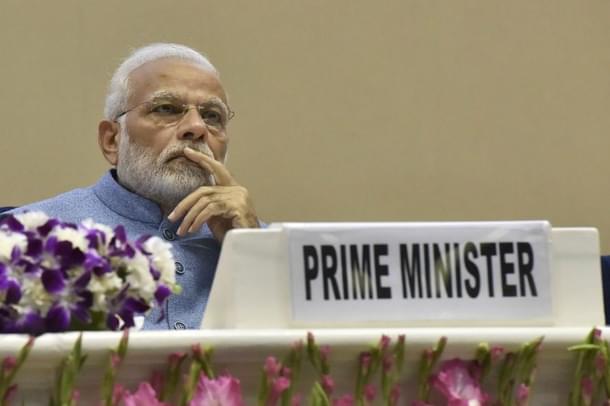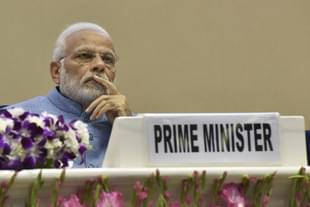Ideas
Why Modi Should Think Twice Before Extending 60 Per Cent Quota To All Private Colleges
Arihant Pawariya
Jan 18, 2019, 01:11 PM | Updated 01:11 PM IST
Save & read from anywhere!
Bookmark stories for easy access on any device or the Swarajya app.


American economist Milton Friedman said that nothing is so permanent as a temporary government programme. What could be a better example of this dictum than India’s reservation system. Introduced initially as a 10-year analgesic drug for historically oppressed and the most backward communities, it has truly transformed into an opiate for the masses.
Implementation of the Mandal Commission report was a watershed moment. For the first time, a larger percentage of population came under the quota than there was outside it, effectively settling the debate, at least from the electoral standpoint. There is no scaling back reservations as long as we have democracy. The march of quotas could only move ahead. And it has.
The Supreme Court’s cap of 50 per cent could have sustained only so long. By its latest move to reserve 10 per cent seats for the economically weaker sections (EWS) among so-far unreserved population, the Bharatiya Janata Party (BJP) government has brought almost 100 per cent of India’s population under quota. Barring a few hundred thousand ultra rich families, there is no political constituency left to oppose reservations.
This is scary enough. However, it is nothing compared to the doomsday scenario many have been predicting for long — reservation in the private sector, the seeds for which were sown in 2005.
In August 2005, the Supreme Court in PA Inamdar case (seven judges), following the precedent set in Islamic Academy case ( five judges) and TMA Pai case (11 judges), ruled that a) there will be no government mandated quota in private unaided colleges and b) the private unaided minority institutions will be at par with private unaided non-minority in this regard. The United Progressive Alliance (UPA) government overturned all these three judgements and inserted article 15 (5) via the 93rd constitutional amendment which a) extended quota to even private, unaided colleges but b) exempted minority private unaided institutions.
However, the UPA didn’t pass any law to formally extend reservations to private unaided higher education institutions. This allowed many private universities and colleges to flourish. And how. Many became big brands trumping IITs and NITs, attracting talent across the country and even abroad.
These private colleges not only became a natural choice for those who couldn’t get into top government-run colleges but also for also those who did crack exams like JEE but didn’t get the choice of their programme.
The contribution of graduates churned out by such colleges in running the IT sector and building a fledgling but vibrant startup ecosystem cannot be overstated. But in India, anything that is able to escape the strangulating government regulations and thrive must be killed. The time is up for these colleges too.
Human Resource Development (HRD) Minister Prakash Javadekar said on Tuesday (15 January) that the government would implement EWS quota from 2019-20 academic session across 40,000 colleges and 900 universities in the country. Various media reports suggest that the government is all set to introduce a bill to extend quota to all private higher education institutions in one go.
The question arises: is this even constitutional? In 2014, a five-judge bench of the Supreme Court in Pramati case ruled that article 15(5) inserted via 93rd amendment didn’t violate the basic structure of the Constitution. It established two things (which are relevant for our discussion here):
First, identity of the right of private educational institutions under Article 19(1)(g) of the Constitution (right of occupation) cannot be said to be ‘destroyed by admissions from amongst educationally and socially backward classes of citizens as well as the Scheduled Castes and the Scheduled Tribes’ because 15(5) gives the state limited power to ensure admission of backwards and nothing more.
There is much more to the right to run and administer a private unaided educational institution than just admission autonomy. Therefore, the width of the power under clause (5) of Article 15 ‘is not such as to destroy the right under Article 19(1)(g) of the Constitution’.
Second, the court didn’t find any merit in the the argument that ‘clause (5) of Article 15 of the Constitution that insofar as it treats unaided private educational institutions and aided private educational institutions alike it is violative of Article 14 of the Constitution.’
Therefore, we can be sure that any bill to extend quotas to private colleges that is rooted in articles 15 (5) and 15 (6) will pass the test of constitutionality. Unless, of course, these questions are revisited by a bigger bench than Pramati’s.
The only questions which need immediate settlement is whether quota based on economic backwardness is violative of the basic structure or not. But even if 10 per cent EWS quota (Article 15(6)) is struck down by the Supreme Court, 50 per cent quota in all private education institutions will stay on thanks to a) article 15 (5) and b) the bill the Narendra Modi government is said to be piloting.
As far as the public sector is concerned, currently, we have reservation in jobs and higher education. All non-minority private schools are already covered under quota thanks to the Right to Education (RTE) Act. Now, even higher education institutions will come under quota leaving only private sector jobs front. But the quota in the former should be understood as a requirement for the latter.
PM Modi would do good to think twice before extending reservations to all private colleges through a law. We have seen how the RTE has played out in the last one decade. He must learn some lessons from the havoc it has wreaked.
Quota in private colleges only compromises merit. But this won’t be the end of the discussion. Very soon, right after introducing reservation, there will be calls by activists and students that those from poor and disadvantaged backgrounds can’t pay the high fees of private colleges. Will these private colleges then be asked to subsidise for poor as private schools are doing under the RTE act?
Reserving seats for backward groups in institutions has no meaning if they can’t afford to study there. This will severely compromise the financial autonomy of institutions. Private colleges will then be forced to indulge in cross-subsidy, i.e. increase the fees for unreserved 40 per cent seats in the general category. This will lead to calls of fee regulation. Hundreds of colleges will be forced to close down due to unviability as has happened with private schools in many states.
On top of all that, minority colleges, free of all these choking regulations will steal the march on non-minority institutions thanks to distortion of market. They will flourish in numbers, have better results to show, attractive placements for its graduates and all this available at much lower fees compared to their competitors.
The proposed quota bill is a stick. Allowing the colleges a one-time 25 per cent increase in seats is being dangled as a carrot. But any businessman worth his salt will never agree to such a bad deal. But with the government, they don’t have a choice.
PM Modi has initiated many reforms in the higher education sector. If he goes ahead with this ill-thought out quota bill, all his good work on this front will be turned to dust.
Arihant Pawariya is Senior Editor, Swarajya.





